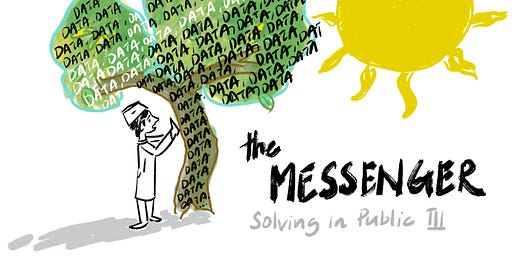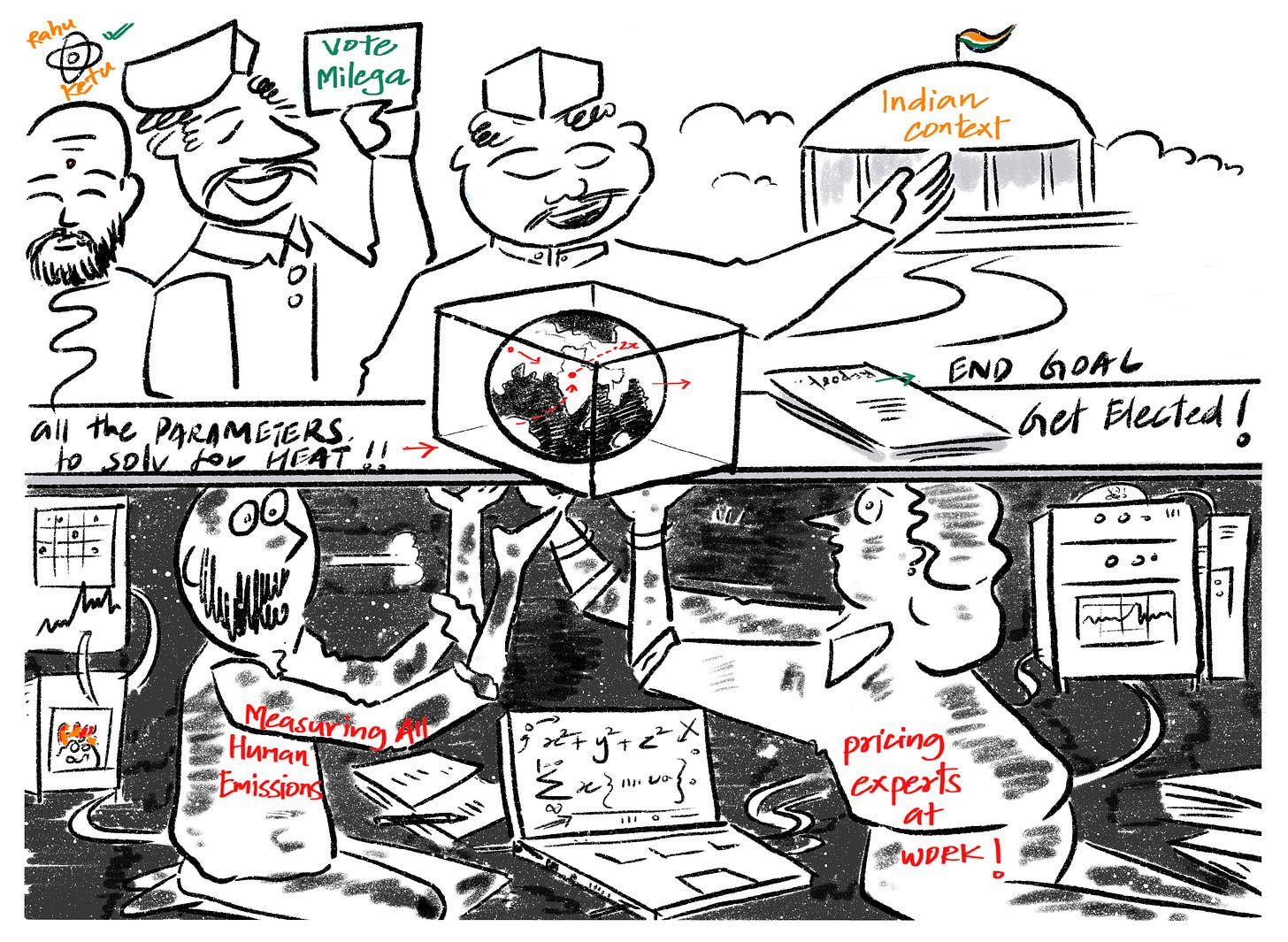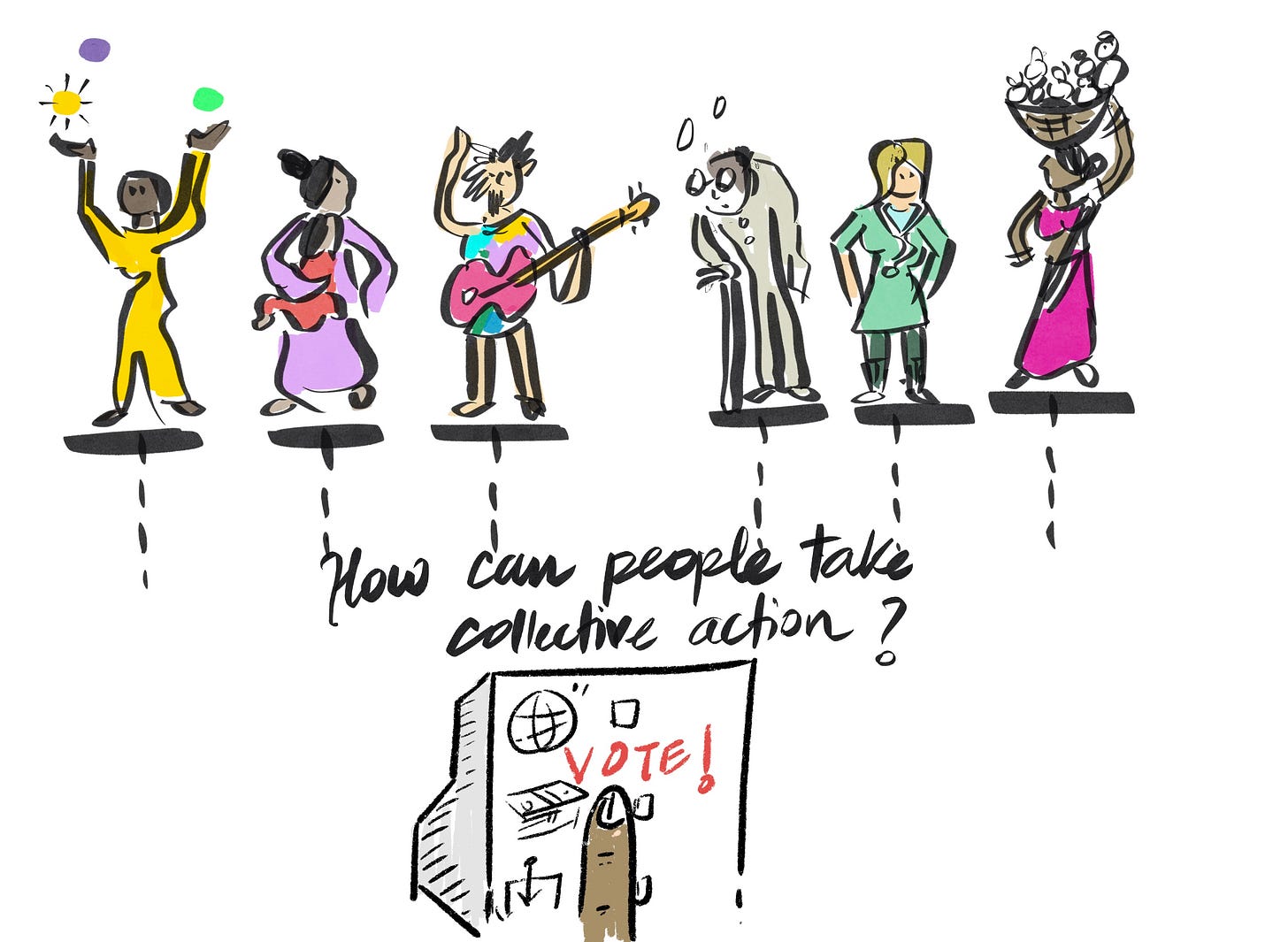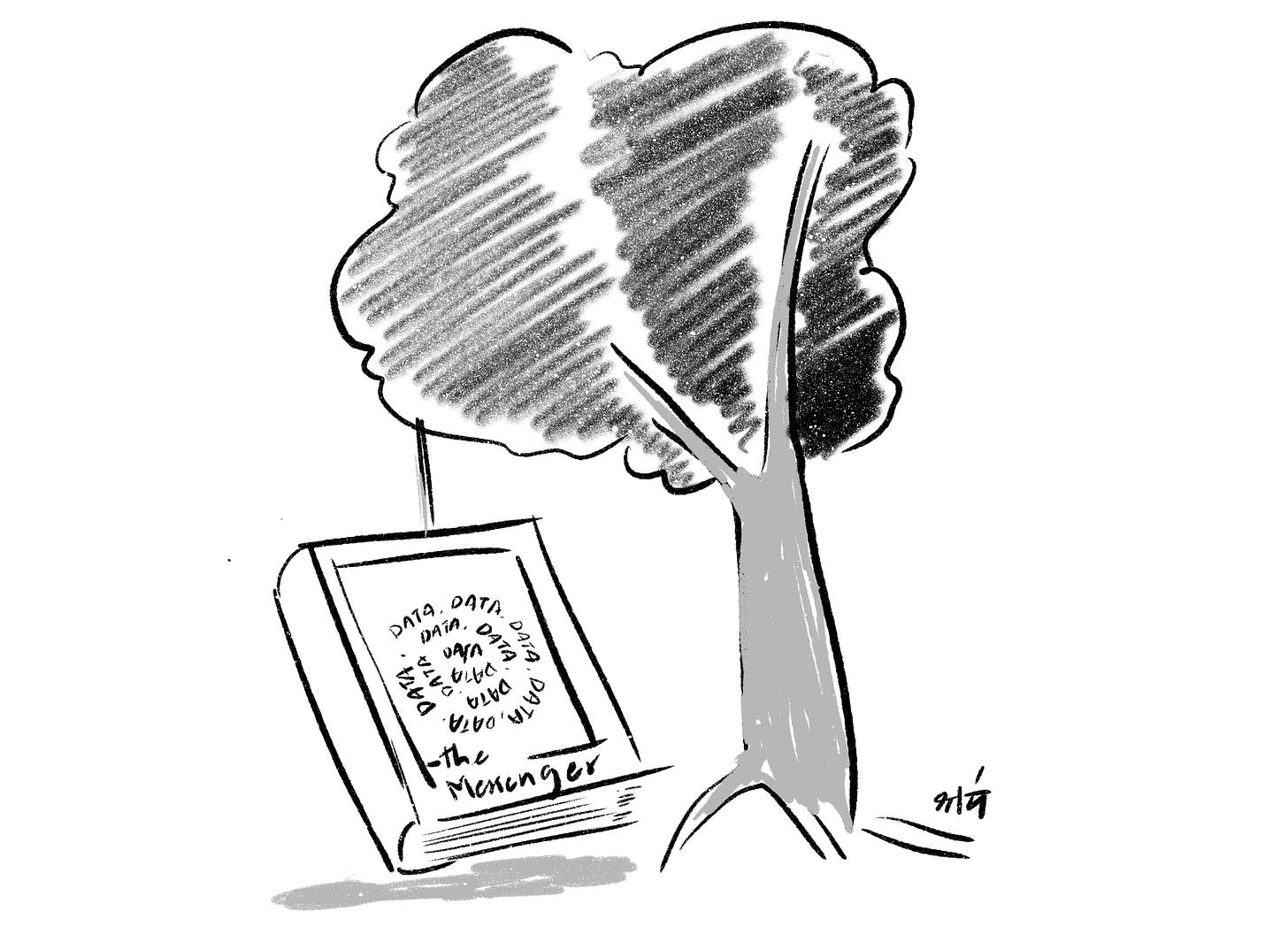Solving in Public III: The Hard and Fast of Cases in Public Interest - Data
No form of matter moves even in the slightest without energy. The state, though abstract in concept, manifests physically through its complex infrastructure, resources and people, particularly authorities, much like matter. Motivating the state to act upon issues such as the escalating extreme heat crisis, therefore, requires energy. What forms of energy might so excite the state’s agency as to prompt such action?
The foremost of such forms of energy is political pressure. As a democratic polity, India’s governing entities are sensitive to the forces of public opinion. Our views on persistent issues are often shaped by our personal experiences, those of our families and communities and education. Yet, for evolving and egregious issues such as climate change, in a time and political economy where several other arguably important issues vie for attention, what could truly mobilise public opinion? Could mere rhetoric passed down through annals of media outlets as ethical imperatives or emotional appeals suffice? We contend that people would not be dying in heat waves if it were indeed true.
An effective case for change in the public realm requires the advocacy of data-driven rhetorics, i.e., narratives backed by data that can be used to make a case by the public and to the public. Such a case ought to seek justice for affected parties, given their lived experiences and predicaments (i.e., along the lines of a legal brief), based, to the fullest extent feasible, on evidence (data and models), and communicated effectively, ideally, via a system that allows the public to act on the knowledge communicated to them (this is where the design brief come handy).
In the first article in this series, we presented our legal brief – loss of lives and livelihoods due to extreme heat ought to be addressed, while noting that existing heat action plans need much rework. In the second article, we presented our design brief – a case for how and why design principles can make a big difference in providing safety and relief to those affected by heat waves. In this issue, we begin presenting the data that evidences our ask for justice.
Hard Data, Fast Action?
Can well-presented data alone make a case effective? There may well be a time and a world where people and institutions serve justice when presented with an evidence-based case for public flourishing. In any other time and world – and we just happen to believe that Delhi today might be that – our case must motivate appropriate agencies in our political economy. This means, for example, that if we contextualise our case with data describing vote bank or GDP loss, we may well be successful at eliciting effective action. Ideally, data analysis must also be complemented with qualitative research that respectfully gleans the lived experiences and predicaments of affected citizenry. With limited wherewithals, however, well-crafted data-driven cases may well be our best shots at effecting positive change.
Good faith actors seeking to facilitate meaningful change through data must, naturally, use reliable data and where appropriate, sound models. In an ideal world, reliable data is that which abstracts faithfully from an underlying reality. However, this notion is not without its own problems:
Is there truly a singular reality?
How faithfully can any mechanism possibly abstract from any reality?
In abstracting from reality, do we leave pertinent nuances behind?
These questions need, nevertheless, not freeze us into paralysis. Recall that we are making a case, and at any given time, we make the best case possible with the evidence at hand. The goal is to approach the truth with honesty; if we adopt that case-making mindset, we can address these issues, very reasonably so.
Designing for Diverse Lived Experiences
If the idea of a singular reality is problematic, we needn’t recognise one. However, whether because of cognitive biases or material limitations, we may all succumb to the tendency to over-simplify issues. In any case, when seeking justice for diverse parties, we ought to be particularly careful to not unify all their realities. For instance, would students in Dr. Rajendra Prasad Kendriya Vidyalaya near the South of Central Ridge Forest feel heat in the same manner as students in Kendriya Vidyalaya in largely concrete Sector 25, Rohini? Likely not, because forests have a well-studied cooling effect on surrounding areas! The students in Rohini should, therefore, have more support dealing with extreme heat.
Therefore, making a static, one-size-fits-all case for heat action for the whole state of Delhi based just on temperature data recorded at a single location, say IMD’s weather station at Safdarjung would not be ideal. Despite noting a large number of thermal hotspots in the South-West district, for example, the Delhi Disaster Management Authority (DDMA’s) heat action plan has no specific actions for the district. Yet practically, on account of material constraints, we may be forced to work in sub-ideal situations where we have data corresponding to a single reality even when we are aware that ground reality is much more complex. In precisely such cases would it be well-worth taking a systematic approach of solving robustly for the particular reality we do perceive through data, while documenting our limitations, and demonstrate that such approaches can be applied to other realities easily.
Noisy Data are Ubiquitous, but not Unmanageable
Doubts about whether our data abstracts faithfully from the reality we are concerned with need not be unfounded. But what can we do? We can either scrupulously collect our own data (i.e., conduct primary research), or take the pains to validate that the data we wish to use are valid and legitimately sourced. Moreover, if we reasonably suspect conflicts of interest amongst parties supplying our data, we must look for other sources and/or report even the appearances of such conflicts. Let us take a purely hypothetical example for the sake of exposition: suppose we were basing our case on surface temperatures in India and relied upon the data provided by the Indian Meteorological Department (IMD).
Suppose further that the Government of India may be interested in suppressing information around mortality due to extreme weather and that the IMD’s data suggests low or reducing mortality due to extreme weather. On the other hand, suppose that you either have reliable data (for example, from a cousin who is a doctor at a government hospital) or just (possibly unreliable) media coverage of extreme weather mortality, which suggests that the same is in fact increasing. In such a case, one would be wise both to look for other reliable sources of data and to report a potential conflict of interest amongst the GoI and IMD (and/or, possibly, the media outlet referred to).
While these practices do not disappear the question of whether any data collection mechanism can ever be error-free, we can do what is humanly possible! Contextualising the problems we find with our data and their sources, validating the data and carefully documenting these and any mitigative action can the progress discourse, where sticking to a puritanical need to have “clean” data can set us back. Topically, this 2019 paper co-authored by people affiliated to the GoI and the IMD, amongst others, which suggests that mortality due to extreme weather events is reducing could be instructive both on the point about appearances of conflicts of interest and on how NOT to use data.
Handling Nuances
The question of whether abstraction ignores pertinent nuances must be addressed while recognising that material constraints may not allow us to construct our case based on every aspect of a reality. Even if we could collect data about every such aspect, we may lack the means to store, access or present it all. On the other hand, pertinent aspects should not be ignored! Tying this back to extreme heat, heat waves, in particular, are a topic of much concern, and so the statistic of how many heat wave days there were in Delhi makes for a good data-driven rhetoric.
However, the definition of a heat wave day, as the IMD has put most recently (in 2020) ignores the role humidity plays in experiencing extreme heat, despite itself noting the reduced ability of the human body to cool itself through sweating in humid conditions. Those who wish to review scientific evidence can review climatological papers from the seminal 1979 paper by Steadman to the Nature GeoSciences article by climate scientists at the University of California, Los Angeles, published as recently as July 2024.
The IMD’s omission of humidity in its definition of heat waves is an example of a situation in which a pertinent nuance has in fact been omitted. At the very least, the IMD ought to use one of the many ways of computing Heat Index (or Apparent Temperature), based both on surface temperature as well as relative humidity data. Public discourses are always a work in progress; they evolve as we find more and/or better evidence, but ignoring pertinent nuances can cause irreparable harm.
We are aware that governments may prefer to work with a simple definition of a heat emergency (e.g., temperature > 45 degrees C); we think a better approach is to design around the needs of citizens: if humidity is a factor in adverse health implications, shouldn’t it be explicitly taken into account while designing intervention protocols?
Extreme Heat in Delhi
The crux of our case for a nuanced heat action plan for Delhi rests, nevertheless, on a universally felt issue: Delhi summers are extreme. This past decade has seen a record number of heat waves. In 2024 alone, there were 13 heat waves, the highest ever since 1979. We base our statements on a dataset containing observations of Delhi University North Campus’ weather, which we acquired from OpenWeather. The dataset and the code we wrote to analyse this dataset are available publicly at our GitHub repository. See below a plot of the daily maximum temperature (surface dry-bulb temperature) at the university campus over 25 years.
Choice of Data Source: We decided to work with the OpenWeather dataset despite the fact that other contemporary work on the topic typically use data supplied by the IMD. It was a no-brainer decision because while OpenWeather charged us less than 800 rupees, the IMD estimated that the data we wanted would cost us almost 3 lakh rupees! That’s right - see below a screenshot of the said estimate. Upon attempting to validate our OpenWeather dataset based on freely available historical data that the IMD’s Regional Meteorological Center, New Delhi makes available, we observed significant discrepancies. Neither the IMD nor OpenWeather offer warranties as to the accuracy of their data, but whereas we found no apparent conflict of interests insofar as OpenWeather is concerned, we did point to the 2019 article co-authored by the IMD’s staff members which claimed that mortalities due to extreme weather events were on the decline, in direct contrast to what various media outlets have been claiming (see our first article in this series for examples). We will revisit the topic about conflicts of interests shortly, but we conclude it best to call upon the need for further study in order to adjudicate what the best source of weather data might be.
Putting citizen experience first
As indicated earlier, we believe that the paramount concern in designing a public heat action plan is the need to alleviate the predicaments of citizens. Humidity is a non-trivial factor in exacerbating health problems due to extreme heat, which is incorporated into a well known measure of apparent (feels-like) temperature, called the Heat Index, using both temperature (surface dry-bulb temperature) and relative humidity. In the process, we learned that Heat Index assumes that people who feel the apparent temperature that the measure is designed to model have access to shade and drinking water, which may well not be the case. This measure, is therefore, a conservative estimate of how citizens exposed to the sun would actually feel. Furthermore, since the IMD does not use humidity and we could obtain no further guidance on how to interpret heat indices, we decided to use the US Government’s advisory in that regard. Accordingly, we treated days during which heat index exceeded 52.4 units (126 units if using temperatures on the Fahrenheit scale) as “extremely dangerous”. When looking at the data from 1979, we see once again a record number of heat wave and extreme danger days in the past decade (here, if any given day could be termed both as a “heat wave day” and an “extreme danger day”, we treat it only as the former, so as to avoid double-counting it).
All of which is to say that there’s a lot of extreme heat in Delhi and it’s going to affect different people differently. We need to offer those various demographics nuanced advice, which we will attempt in the next essay in this series, but let’s recap the impacts of extreme heat first.
Health Impacts of Extreme Heat
Just to be clear, extreme heat is bad for you - not only does it put your life in danger, it reduces productivity, makes work more difficult and exerts negative pressure on mental health. In somewhat greater detail, extreme heat leads to:
Increased Mortality and Morbidity
Extreme heat is a leading cause of weather-related deaths, exacerbating underlying health conditions and increasing the risk of accidents and infectious diseases. Heat stress can lead to severe health outcomes such as heat exhaustion, heatstroke, and hyperthermia, which can be fatal if not managed promptly.
The number of heat-related deaths has been rising, with significant increases observed among older adults. For instance, heat-related mortality for people over 65 years of age increased by approximately 85% between 2000-2004 and 2017-2021.
Unsurprisingly, people with lower incomes are particularly vulnerable to the effects of extreme heat due to inadequate housing and limited access to air conditioning.
Vulnerable Populations and Exacerbation of Chronic Conditions
Certain groups are more susceptible to the adverse effects of extreme heat. These include older adults, young children, pregnant women, individuals with chronic illnesses, outdoor workers, and those with limited access to cooling resources. Vulnerability is influenced by both physiological factors, such as age and pre-existing health conditions, and socio-economic factors, such as occupation and living conditions.
Extreme heat can worsen chronic health conditions, including cardiovascular disease, respiratory issues, diabetes, and mental health disorders. High temperatures can lead to flare-ups in conditions like asthma, kidney disease, and hypertension, increasing the risk of severe health events such as heart attacks. Additionally, heat can impair cognitive and motor functions, leading to higher risks of occupational injuries and accidents.
Conclusion
Extreme heat poses a significant threat to public health, particularly for vulnerable populations. The health impacts are severe and wide-ranging, affecting both physical and mental health. Effective public health strategies and climate change adaptation efforts are crucial to reducing the health risks associated with extreme heat and protecting communities worldwide. As global temperatures rise, the number of people exposed to extreme heat is growing exponentially, leading to higher rates of heat-related morbidity and mortality.
The negative health impacts of extreme heat are preventable through effective public health interventions and policies. Measures such as heat action plans, early warning systems, heat shelters, cooling centres and public advisories can help mitigate the risks - if they are citizen-centric, well designed and connected via interoperable systems! We can’t be citizen-centric if we don’t understand the distribution of citizens… In the next essay in this series, we will dive deeper into the demographics of Delhi to see how the heat action plan needs to take those population indicators into account.












